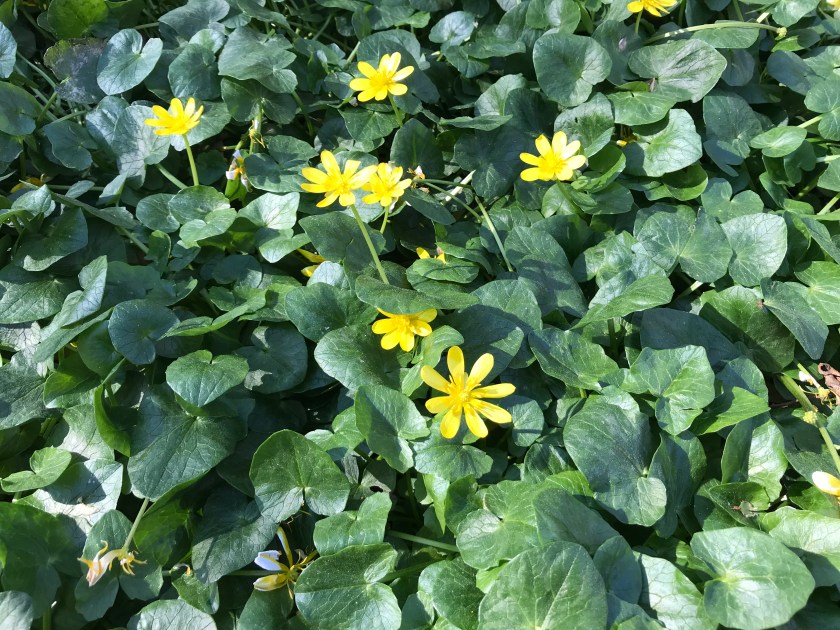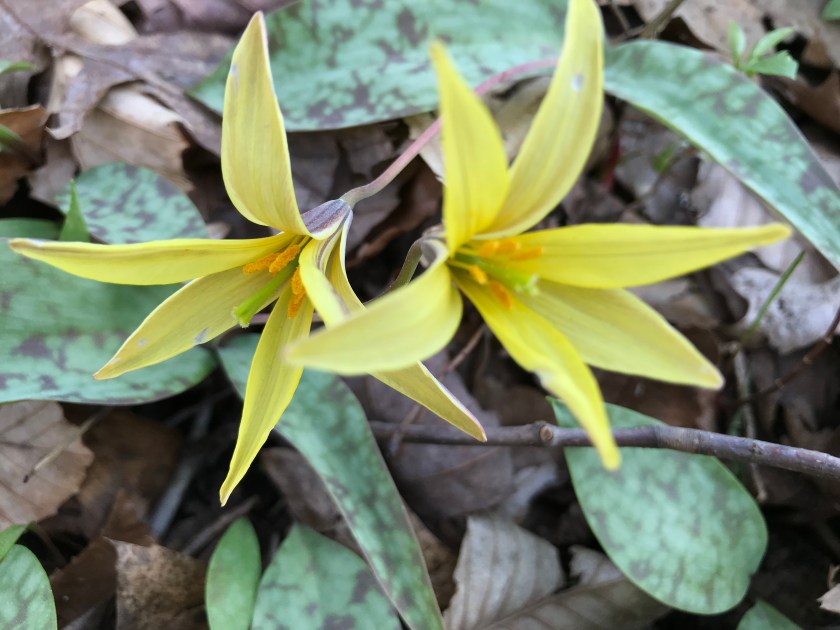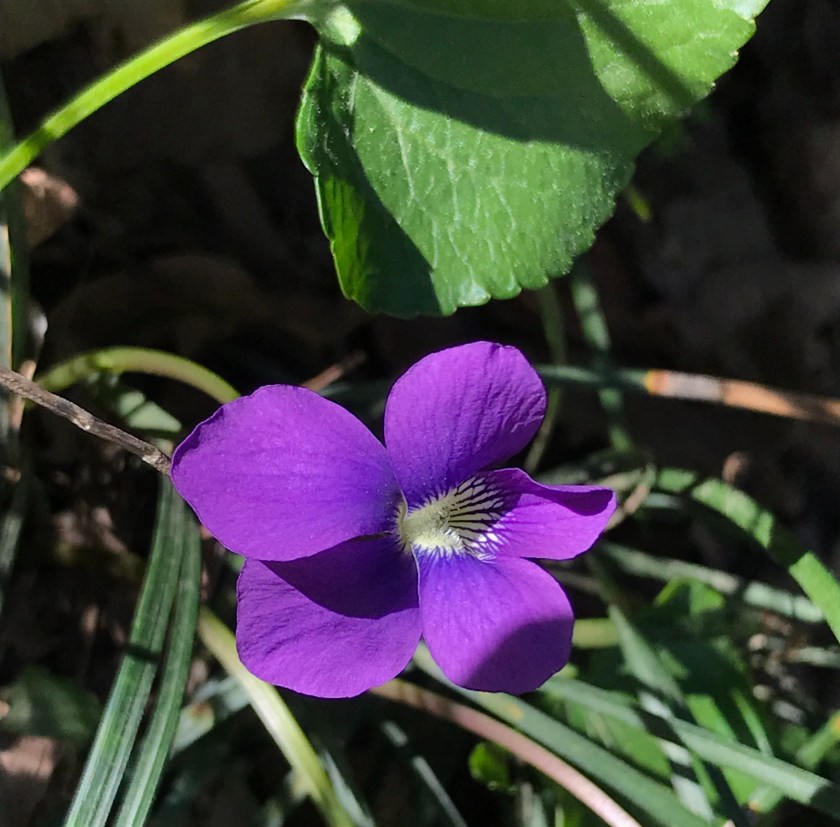
Jemison Park Nature Trail is one of my favorite local spots. This greenway follows Shades Creek and meanders through Mountain Brook. It’s just a hop, skip and jump away from central Birmingham.
I’ve written about iNaturalist on this blog before, and I’m featuring it again in this post about my recent nature walk through Jemison Park. If you’re in the Birmingham area and want to learn about iNaturalist from an expert, I recommend “Introduction to iNaturalist,” presented by Dr. John Friel of the Alabama Museum of Natural History on May 6, 2018, 1-3:30 p.m., at Ruffner Mountain.
I’ve been using the iNaturalist app since attending one of Dr. Friel’s presentations last year. I find it helps me better observe and appreciate the intricacies of nature, which makes spending time outdoors all the more rewarding. I also like recording and identifying plants in natural areas because my hope is to gradually transform our privet-filled wooded backyard into a woodland garden.
Here is what I observed on my walk through Jemison Park:

I believe this ground cover (also pictured at the top of this post) is lesser Celandine (“Ficaria verna”). iNaturalist’s photo identification software suggested this ID. I carefully compared the database’s photos against mine. I think it’s a match, but the ID needs confirmation from the iNaturalist online community of citizen scientists. This plant is definitely going on my woodland garden wish list. [Update: I have since found out that Lesser Celandine is considered invasive in America, where it is not a native species. So it is off the wish list!]
Next is Italian Arum (“Arum italicum”). Once again, iNaturalist software helped me venture a guess on the ID. A fellow user, who happens to be pursuing a doctorate in marine ecology and phycology, agreed. That moved my ID up to research grade. It will stay that way as long as two-thirds of iNaturalist users concur.
I also learned that some gardeners underplant Italian Acum with hostas. When hostas die back in winter, Italian Acum will maintain an attractive ground cover. I already have hostas, so I am definitely going to try this!

The identification of the Beaked Trout-Lily (“Erythronium rostratum”) above illustrates the combined power of software and collective human brainpower in making sense of the vast numbers of observations uploaded to iNaturalist.
After looking through the software’s suggestions, my best guess at an ID was a Yellow Trout Lily (“Erythronium americanum”). However, another citizen scientist, self-described as a “hobbyist botanist, reasonably well-read on trillium and solidago,” countered that the plant I observed was in fact a Beaked Trout-Lily. His argument: “prominent auricles at the base of the tepals which encircle filaments; tepals not streaked with purple; flower not nodding; petals not sharply reflexed.”
This is a good time to mention another tip about using iNaturalist. Even if you are an amateur, do your best to research and identify your observations starting with kingdom at a minimum, and narrowing down the taxonomy as much as you can. The iNaturalist software and other references can help you do this, as long as you employ common sense and pay attention to the details. The more you can help narrow it down, the more likely someone who actually knows their stuff will look at what you’ve posted. They can then confirm your ID, further narrow it down or correct it if needed.
I’ll close this post with a few more iNaturalist observations from Jemison Park Nature Trail.




It’s so satisfying when you correctly identify a plant.
LikeLiked by 1 person
I’m hooked – will add you to my Feedly.
South Africa is in the throes of moving from ispot to inaturalist. I never joined before because it was so complicated – but it is a good way to ID flowers with others who ‘hiked that route this week’.
Italian arum is a plant I have coveted since I saw it in an open garden years ago. But I garden for biodiversity and am trying to make future plant choices lowland fynbos to recreate a corner of previous habitat. The urban edge, Table Mountain National Park, is my view thru the windows.
LikeLiked by 1 person
Thanks, Diana! I am very much looking forward to following your garden in South Africa, too, to see what you are growing for biodiversity and habitat there. What an incredible treasure to live so close to Table Mountain National Park.
LikeLike